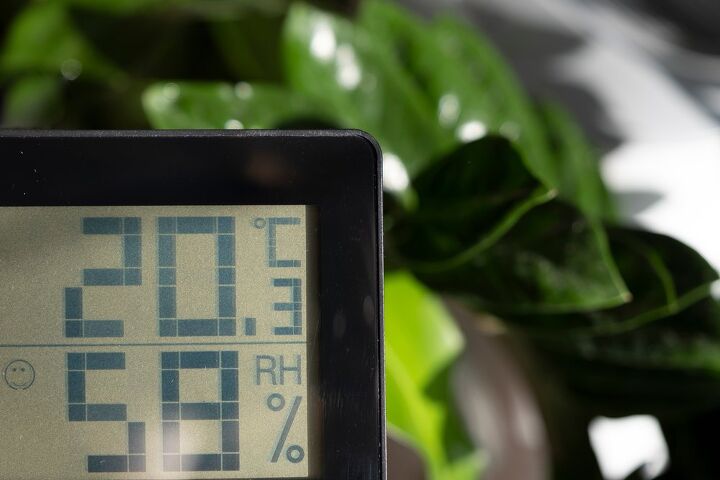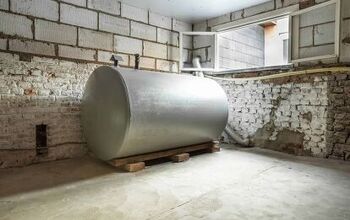How Do I Lower The Humidity In My Home?

Humidity can ruin a great day outdoors, but nothing is worse than excessive humidity in your home. It’s hard to get comfortable when you breathe moist air, and it can be dangerous if you have respiratory problems. Luckily, there are several simple ways to lower humidity in your home.
The best way to lower the humidity in your home is to run fans, turn on the air conditioner, and use a dehumidifier. Open a window so moist air can escape your home and try to only take showers that last 5 to 10 minutes. Seal your crawlspace or install a vapor barrier if your basement and crawlspace are humid in particular.
Inspect the pipes in your home and patch leaks to reduce the moisture in the air. Follow along as we explore how to lower the humidity in your home.
How To Lower The Humidity In Your Home
1. Use A Dehumidifier
The easiest way to lower the humidity in your home is to use a dehumidifier. As the name suggests, this simple device can remove moisture from the air. It’s common for people with respiratory problems to use dehumidifiers because it makes it easier to breathe in a moist environment.
Small dehumidifiers cost between $70 and $250, and professional-grade dehumidifiers cost an average of $2,000. However, the typical homeowner only needs one simple dehumidifier. It’s worthwhile to get two small dehumidifiers if you have a large house and can’t keep up with the humidity.
2. Run Fans
Fans can help lower the humidity in your home right away. That is because they can quickly circulate air and that can effectively remove moisture. For example, the humidity in your home will spike after a hot shower.
You can quickly lower the humidity in your home if you run a fan after you shower. Whether it be a ceiling fan, box fan, or pedestal fan, running fans for even 20-30 minutes can suck moisture out of the air.
3. Cut Back On Houseplants
While houseplants can make your home much more comfortable, they can also add lots of humidity to the air. Many plants release humidity, but you also add humidity to the air when you water your houseplants. You can still keep some houseplants without having an overly humid home, but too many of them will significantly increase the humidity.
If you have many houseplants in your home, you should invest in a humidity meter. Check the humidity in areas where you have houseplants and compare them to the rooms without them. You will likely notice a big difference. Move some or all of your plants outside if you can’t tolerate the humidity.
4. Turn On The Air Conditioner
If you don’t have a dehumidifier, you can simply run your air conditioner to remove moisture from the air. Air conditioners remove heat and moisture from the air, and that’s what cools your house down. While you may have a high electric bill if you run your AC all the time, it’s a great quick fix if your home feels too humid.
5. Open The Window
Open the window if your home is humid and stuffy. This can quickly release warm air and moisture from your home, and it doesn’t take long for the humidity level to decrease. If your bathroom has a window, you can quickly lower the humidity in your home if you open it after you take a shower.
6. Patch Pipes
Leaky pipes can increase the humidity in your home. Damaged pipes typically leak water that will eventually evaporate and cause high humidity. Not only do leaky pipes cause high humidity, but they can also increase your water bill.
Pipes that leak waste lots of water and negatively impact the performance of your plumbing fixtures. Ideally, you should hire a plumber to patch your pipes if you don’t have plumbing experience. Otherwise, you can patch leaky pipes without professional help if you use plumbing-strength epoxy.
7. Take Short Showers
We all love to take long, hot showers, but that can easily increase the humidity in your home. This is especially true if you don’t run a fan when you take a shower. Turn on a fan, open a window, and run the air conditioner after you take a shower to lower the humidity.
Avoid using overly hot water and try to limit your shower to only 5-10 minutes, so there isn’t too much moisture in the air in your home.
8. Seal Exterior Cracks
It’s hard to keep up with the cracks in your home’s exterior, but it’s necessary. This is especially true if you live in a humid climate. Moist air can make its way into your home through the cracks in your home’s exterior and it will affect the air quality. Seal exterior cracks, so moist air cannot get into your home.
9. Use A Vapor Barrier
Crawlspaces are useful for storage, but they can let moisture into your home. They can also compromise the air quality in your home and increase your energy bill if you don’t seal them properly. Install a vapor barrier to stop moisture from getting into your crawlspace and home.
This can protect against wood rot and respiratory problems. Moisture barriers are typically made of poly sheeting or rigid foam. It costs between $1,200 and $3,800 to install a moisture barrier, but it varies based on the size of your crawlspace and basement.
10. Install Weatherstripping
Weatherstripping can keep cool air in, hot air out, and bugs from getting into your home. You can also use weatherstripping to keep moist air out of your home if you have a big gap under your door. If you don’t want to invest in weatherstripping, you can simply use old towels to block the space under your door.
11. Seal Your Crawlspace
Do you ever use your crawlspace? If you don’t use it, you may simply want to seal your crawlspace so you don’t have to worry about moisture and uneven indoor temperatures. It costs at least $1,500 to seal a crawlspace, but it’s worth the cost if you constantly find rotten wood or if your home is moist.
12. Open The Doors In Your Home
When you keep the doors in your home closed, you can trap moist air in several rooms. You can tell this is the case if you walk into a room after the door has been shut for a long time. The room will likely feel stuffy and uncomfortable.
Open the doors within your home to improve the airflow and stop rooms from becoming too stuffy. The improved airflow will eventually lower the humidity in your home.
Summing It Up
Use a dehumidifier, run fans, and turn on the air conditioner to lower the humidity in your home. Seal damaged pipes to stop moisture from entering the air and install weatherstripping, so moist air can’t come in from outside. Install a vapor barrier in your basement or seal your crawlspace if moisture makes its way upstairs.
Related Guides

Nick Durante is a professional writer with a primary focus on home improvement. When he is not writing about home improvement or taking on projects around the house, he likes to read and create art. He is always looking towards the newest trends in home improvement.
More by Nick Durante



























